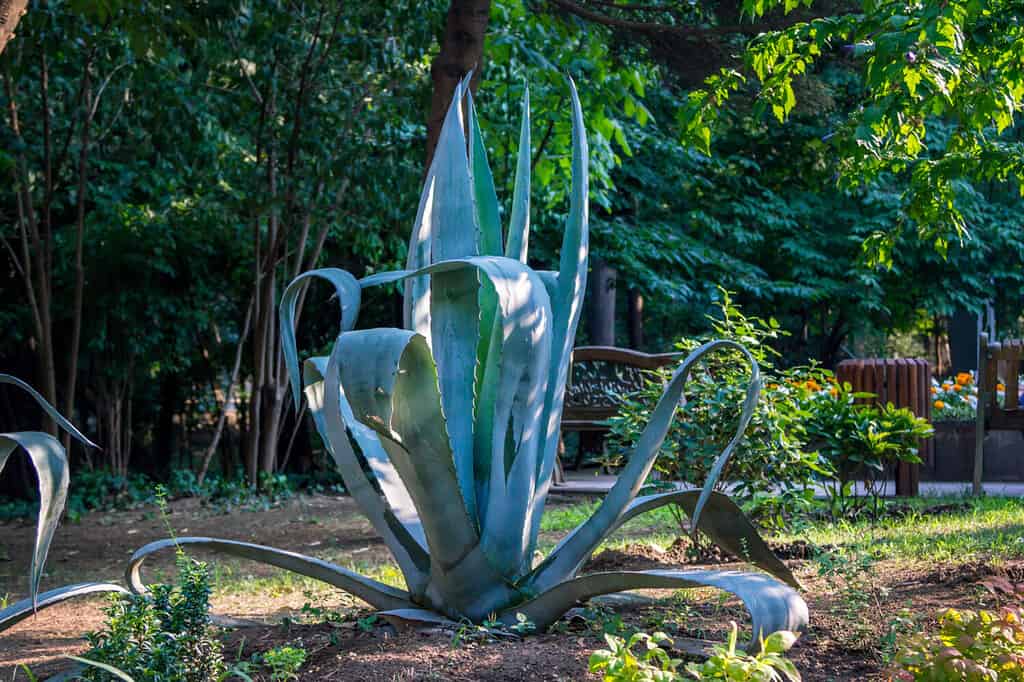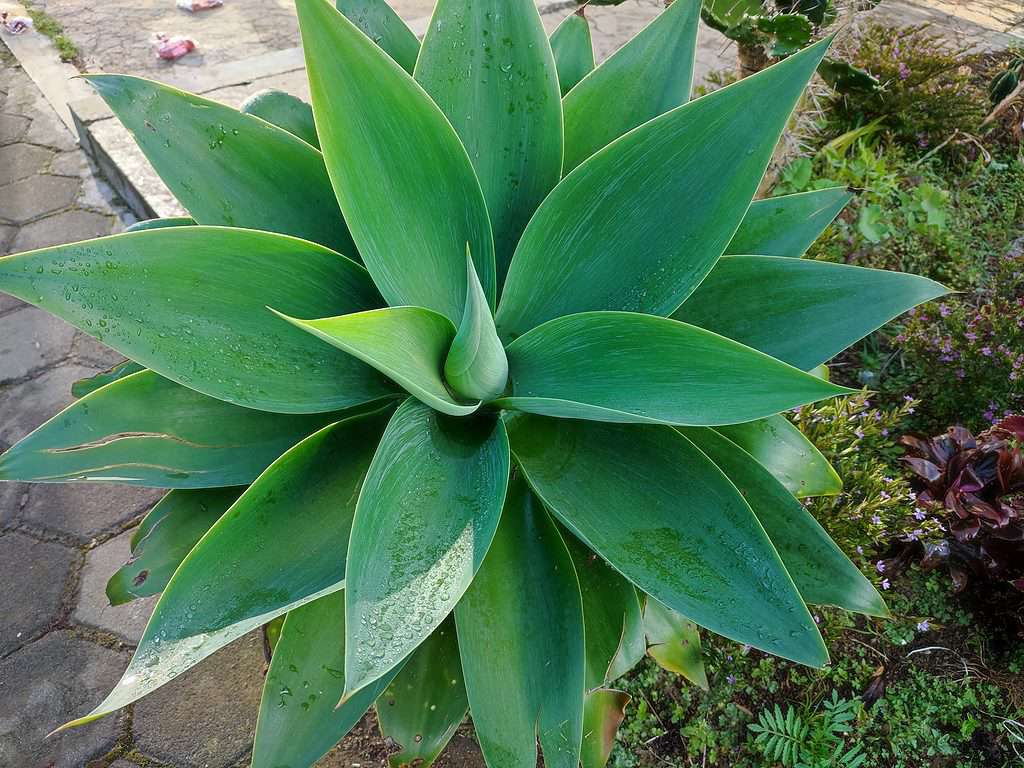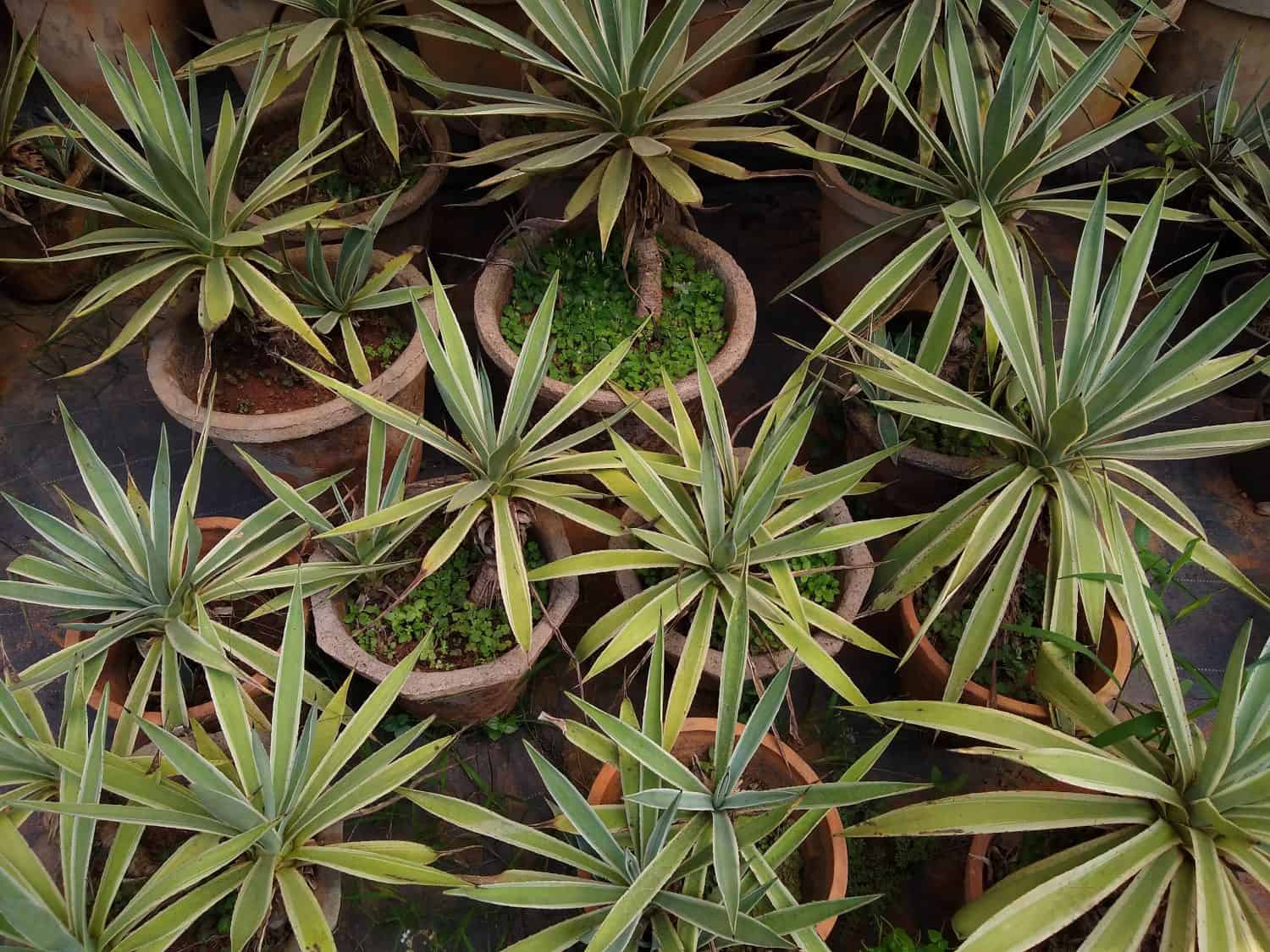There are over 200 agave plant varieties out there. Most grow wild, but there are about 30 species that are adapted to grow in people’s yards and pots indoors.
While some of these species overlap quite a bit in appearance, there is still a good range between them. Most of them are green or have hints of green in them, but some can be white, blue, and yellow as well.
Some agave plants are adorable and small, perfect for a little plant beside your bed or on your desk. However, some species grow several feet tall.
What You Need to Know About Agave Plants
Agave plants live for a fairly long time. Many of them will live between 25 and 35 years, though some will live longer.
One downside to these plants is the fact that they die after they bloom. Unfortunately, while the bloom of many agave is quite beautiful, you only get to see it once.
Some species will produce pups after flowering. The main plant will not make it, no matter how well you take care of them.
As succulents that live in very dry areas, agave plants are relatively easy to grow and care for. They need warmer temperatures, though some can handle down to 20 degrees Fahrenheit before any problems arise, and minimal water.
Best Agave Plants For You
While some agave plants do well in planters indoors, some of the most popular species grow outdoors and take up a lot of space.
1. Century Plant

This agave plant looks like one you’d find in a pot in a garden store, but much, much bigger.
©Elena Kirey/Shutterstock.com
Agave americana is often called the century plant. It looks like quite a classic agave plant, with rosettes and spiky leaves. Due to its massive size, it’s not great as an indoor plant. But it looks perfect outdoors in a large planter or buried directly into the ground. It can get up to six feet tall and a foot wide.
Though this plant is naturally found in the United States and Mexico, many places around the world cultivate the century plant because of its ornamental value. South America, India, China, Thailand, and Australia are just some of the places that have taken a liking to this plant.
- Hardiness Zones: 8-10
- Best For: People who want a feature plant in their xeriscape gardens.
2. Blue Agave

These spiky plants aren’t always popular amongst gardeners and succulent collectors, but they are useful in one way.
©javarman/Shutterstock.com
Blue agave, Agave tequilana, is a plant widely used to produce tequila. It’s native to Jalisco, Colima, Nayarit, and Aguascalientes in Mexico, but has been imported into many of the southern parts of the United States. Each stalk can grow up to 16 feet tall but usually stays closer to 7 feet.
It’s not often kept as a houseplant, but there is one story about one in Boston that grew up to 30 feet tall. A hole had to be cut in the roof of the greenhouse it was in to make space. It was so well cared for that in 2006, it finally flowered.
- Hardiness Zones: 9b and 10
- Best For: Those who want a more wild-looking agave, or who want to make their own tequila.
3. Fox Tail Agave

Top view of a beautiful foxtail agave
©Panji.Art/Shutterstock.com
Fox tail agave is known as Agave attenuata. It gets its common name because of the flower stalk that grows in the summer. The stalk arches up before dipping back down, much like a fox tail.
The rosette is incredibly impressive. It’s the perfect option for someone who wants a showstopper of a plant in the summer. While the agave gets around four feet wide and four feet tall, the flower stalk can reach over 10 feet high.
- Hardiness Zones: 9-12
- Best For: Those who want a showstopper, public gardens, rock gardens, or succulent gardens.
4. Caribbean Agave

This agave variety comes in a variety of colors, from a rich green to a blue-green.
©SISYPHUS_zirix/Shutterstock.com
This agave plant grows a maximum width and height of four feet. They don’t stand on stalks like some other species, instead growing on very short trunks. Be careful when handling these plants, as the leaves tend to be very sharp, especially at the tips.
The species is known as Agave vivipara or Caribbean Agave. The leaves are fibrous and have been traditionally used to make rope and thatch.
- Hardiness Zones: 8-11
- Best For: Those looking for a more simple succulent as an accent or border plant.
Summary of Agave Plant Varieties
| List Number | Plant | Zones | Best For |
|---|---|---|---|
| 1 | Agave americana | 8-10 | Xeriscape gardens and those who want a large ornamental plant. |
| 2 | Agave tequilana | 9b and 10 | Tequila makers, those who want a more wild-looking garden. |
| 3. | Agave attenuata | 9-12 | Those who want to impress people in the summer with stunningly tall plants. Ideal for rock gardens and succulent gardens, but also works as an accent plant for most of the year. |
| 4. | Agave vivipara | 8-11 | Those who want a simple border plant that still displays some beautiful colors throughout the year. |
The photo featured at the top of this post is © iStock.com/AttilaBarsan
Thank you for reading! Have some feedback for us? Contact the AZ Animals editorial team.






